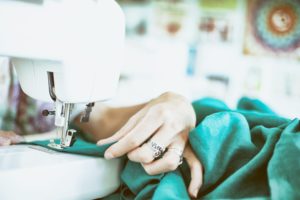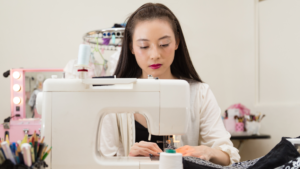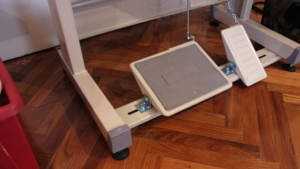Last Updated on October 21, 2021
Purchasing a cover stitch machine is an investment. It is essential to know what features are available on different machines and which ones best suit your needs to ensure you’re spending your money on a machine that will last.
With the right machine, you’ll find that sewing a cover stitch is a breeze. But with so many options out there, it can be hard to pick just one. But don’t worry, this article will help you get started searching for the perfect cover stitch machine.
This buyer’s guide will give you all of the information needed to make an educated decision about which machine is best for your needs and budget.
You’ll learn more about the features of cover stitch machines, its different types, and the best cover stitch sewing machine to purchase.
Essential Features of Cover Stitch Sewing Machine
Depending on your cover stitch sewing machine, there are a lot of features to consider before making a purchase. Here are some of the most important factors to keep in mind when shopping around.
Threading System
The threading system of a cover stitch machine is crucial; this can be a time saver and make sewing much easier on your hands if you are just starting.
It also determines how easy or difficult your sewing experience will be. Most models have an automatic needle threader, and different threading systems offer different benefits. But this shouldn’t be much of a concern if you purchase new equipment.
Threading Stands
Another feature worth considering is the thread stand on your machine; it can make a big difference in using and storing your cover stitch machine. Some machines come with an all-in-one design where everything connects to one base unit instead of having separate pieces for each function.
The thread stands of some machines are adjustable, so you can store them closer to the ground if desired. This makes it more convenient for taller people or those who have trouble bending over. Also, removable parts can be stored in drawers or on shelves to save space.
Basic Stitches
Many home sewing machines will never need more than a basic straight stitch, but many cover stitch machines come with several other stitches built-in. The cover stitch is used for hemming knits or finishes raw edges on lightweight fabrics. This can be very helpful if you are sewing clothing items that require this type of finish.
A good machine should have at least two different styles of zigzags, one with narrow stitch width and another with a wider zigzag.
Extra Accessories
A few extra accessories are also worth considering before making a purchase. Some machines come with an additional spool pin for sewing heavier fabrics or multiple layers of fabric at once.
Many also include a hardcover to protect the machine when it is not in use; this can be especially important if you are sewing at home or plan on storing your equipment somewhere other than an industrial setting.
These are some of the main factors to consider when shopping for a new cover stitch sewing machine. There are some great options out there, but as with any product, it is essential to make sure you know exactly what features and accessories will suit your needs best.
Different Types of Cover Stitch Machines
There are several different cover stitch machines, so it is important to know what machine you need before purchasing. Here’s an overview of your options:
Manual Cover Stitch Machine
A manual model is the most affordable option and can be used at home or in small commercial settings like tailoring shops. They are usually lightweight and portable, so they can be stored just about anywhere.
These machines are easy to use but have limited functionality compared to other types of cover stitch machines. They may not offer a wide range of stitches or the ability to adjust tension settings for different fabrics.
Semi-Automatic Cover Stitch Machine
A semi-automatic model is similar to a manual machine, but it uses an electric foot pedal instead. This can make sewing faster and more convenient if you plan on making several cover stitches at once or don’t want to keep up your speed manually.
This type offers many of the same benefits as a manual machine, but it also has the convenience of an electric foot pedal. This can be very helpful if you are planning on doing a lot of sewing or don’t have the hand strength to keep up your sewing speed manually.
Automatic Cover Stitch Machine
An automatic machine is most similar to a computerized serger and offers more functionality than other cover stitch machines. These are large, heavy-duty models that feature a large sewing space and can accommodate multiple layers of fabric at once.
These are perfect for industrial settings where they will be used frequently. The biggest benefit of an automatic model is its wide range of stitches and settings that can be adjusted quickly.
These machines often have more than two dozen different stitches, including some that are unique.
These are some of the main differences between manual, semi-automatic, and automatic cover stitch machines.
Before purchasing, it is essential to know what type of machine you will need before purchasing to avoid an expensive model that doesn’t offer all of the features or accessories needed for your business or home sewing projects.
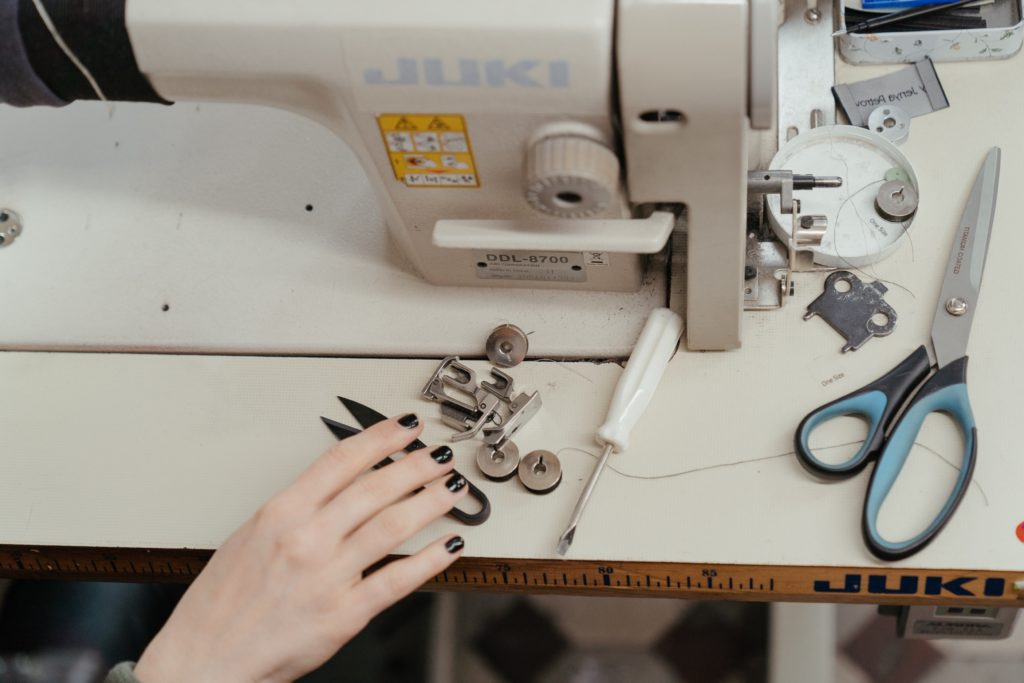
Top- Rated Cover Stitch Machine On The Market
There are several different types of cover stitch machines. Each one has its features and accessories that make it unique. Here are the top-rated cover stitch machines on the market today.
Bernette b42 Funlock Cover Stitch Machine
- Type: The Bernette Funlock b42 is a coverstitch machine featuring a total of 3 different coverstitches with a width of 2.8mm and 5.6mm and a chain stitch
- Usage: With it, you can provide your hems, edges and cuffs with professional stitches, giving your sewing project the perfect look
- Works with Most Fabrics: Excellent results can be achieved with the Bernette Funlock b42, even with very stretchy fabrics and thin knitted fabrics
- Threading is Easy: Threading the needles and loopers is also really easy, thanks to the separate needle threader and the looper threading mechanism
- Illuminated: To give you a good view of your sewing project, the Bernette Funlock b42 also has a bright LED light
The Bernette b42 Funlock is a great choice for home sewists who are just getting started with cover stitch machines or looking to upgrade their current sewing equipment. It comes with automatic needle threading and an adjustable presser foot pressure, making it easier to use.
With this, you can provide your edges, hems, and seams with a great finish. This model is also very affordable and easy to use, making it an excellent option if you are just starting in the world of cover stitch machines.
Janome CoverPro 900CPX Cover Stitch Machine
- Seam Tightening System (STS)
- 1 needle - 2 thread chain stitch, 2 needle - 3 thread cover stitch
- Speeds up to 1,000 spm
- Extra large bed space | Differential feed ratio 0.5 to 2.25
- Bonus Package Includes: Janome Elastic Gathereing Attachment (wide), Janome Elastic Gathering Attachment (narr
Another excellent option for a cover stitch machine is the Janome CoverPro 900CPX. This model has many features as Bernette’s b-42 Funlock, including an automatic needle threader and adjustable presser foot pressure.
It also comes with plenty of extra accessories, including a hardcover to protect the machine and an additional spool pin for sewing heavier fabrics or multiple layers of fabric at once.
This model is also very affordable and easy to use, making it another excellent option for you.
Juki MCS-1500 Cover Stitch and Chain Stitch Machine
- The Juki MCS-1500 cover and chain stitch machine is erfect for various applications such as simple hems, sleeve cuffs and necklines. Since the stitching stretches, it is ideal for stretch fabrics. Since the lower thread forms a chain on the opposite side of the fabric, the stitch is strong when it is stretched making it ideal for stitching the waist and side seams of pants. It also does beautifully with decorative stitching for necklines.
- The presser foot of the MCS-1500 is higher at its tip, allowing the fabric to be easily inserted. In addition, raising the presser foot lifter to the first position raises the presser foot to a full 10mm
- The MCS-1500 allows you to adjust the differential feed to sew beautiful finishes, even with stretch fabrics such as knits and georgette.
- A simple press of a button lowers the thread looper making it very easy to thread.
- The Juki HZL-F600 sewing machine comes with the standard 30-day Amazon warranty, followed by a manufacturer’s warranty of 2 years on all machine electronics and 5 years on the machine’s head unit. IMPORTANT: You MUST fill out Juki warranty registration card and keep all original packing (box, manuals, etc.), to get the Juki manufacturer’s warran
If you are looking for a versatile cover stitch machine, the Juki MCS-1500 is another great option. This model comes with a double bed needle and can be used to sew both cover stitches and chain stitches.
It’s also suitable for stretch fabrics since the stitch is durable even when stretched, perfect for stitching pants, waist, and side seams.
The machine also comes with an automatic needle threader, which makes it very easy to use.
With this, you can provide your edges, hems, and seams with a great finish. This model is also very affordable and easy to use.
Tips For Using a Cover Stitch Sewing Machine
Cover stitch machines can be an excellent tool for covering up your thread and providing professional-looking edges, hems, seams, and more.
However, it is essential to take the time to learn how to use your machine properly to avoid any mistakes or other issues. Here are some tips for using a cover stitch machine:
Read and Follow Manufacturer’s Instructions
This will help you learn more about your machine and how it works to avoid issues arising from using the wrong settings or not following instructions.
Watch YouTube Videos
Many great videos on YouTube can be a helpful learning tool for covering stitch machines. These can come in especially handy if you are just starting and don’t have much experience with cover stitch machines.
Ensure The Right Thread Is Used
It is important to ensure that you use the correct thread when making your cover stitch.
Use two spools of topstitching thread, one for each needle. This will help prevent any mistakes or issues with getting an even stitch while covering up your threads simultaneously.
Be Patient And Take Your Time
The last thing you want to do with a cover stitch machine is rush through your project. It’s essential to be patient and take the time needed for getting an even, quality edge or hem when using this type of sewing equipment.
Care For Your Machine Properly
You need to make sure that you care for your cover stitch machine properly. This includes keeping the machine clean and oil, as well as using it correctly for your projects.
Following these tips will help to ensure that you get the most out of your cover stitch machine and end up with a high-quality finish on all your projects.
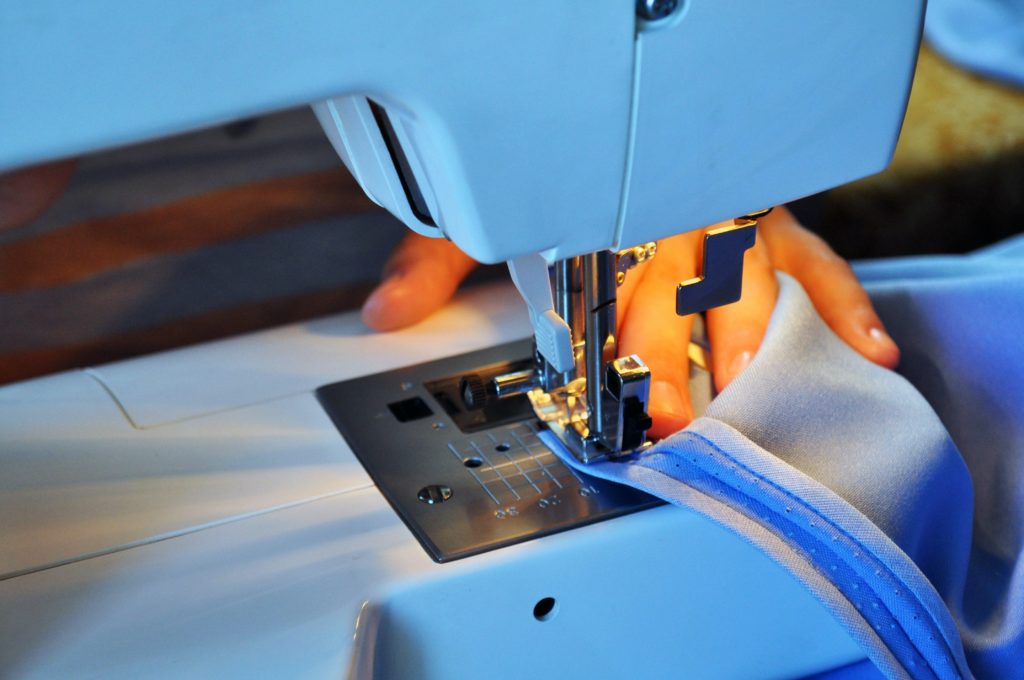
Frequently Asked Questions
Is a Cover stitch Machine the Same as a Serger?
No, a cover stitch machine is different from a serger. A serger features multiple threads and can be used for both right-side and wrong-side stitching.
On the other hand, most cover stitch machines require two spools of thread to achieve the best results.
Can You Do a Cover stitch on a Regular Sewing Machine?
Since most cover stitch machines require two spools of thread, you cannot do this on a regular sewing machine.
However, some models use only one cone-shaped spool to achieve the same results as those with a double bed needle or cover stitch machine.
How Do You Reverse a Cover Stitch?
To reverse a cover stitch, you need to remove the fabric from your machine and then reinsert it into the opening. This will ensure that both needles are in working order for this process.
What Is “Stitch Width” on a Cover Stitch?
The stitch width refers to how far apart each of the two stitching lines will be on your cover stitch. This can be adjusted to fit any project you need to be done, covering seams or hems.
What Is the Best Cover Stitch Machine?
The best cover stitch machines can vary depending on your needs and preferences. It is important to consider what each machine has to offer and how it will work for you, as well as your budget.
Some Final Words
There are many benefits to using a cover stitch machine, and purchasing one can be a great investment.
The key is to take your time, learn how it works and follow proper instructions on its use. This will ensure that you get the most out of your cover stitch machine so that you can achieve excellent results every time!




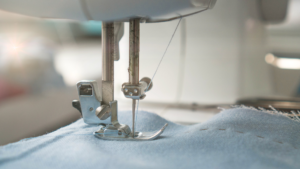
![Read more about the article Difference Between Shears and Scissors [Guide]](https://www.sewkitkit.com/wp-content/uploads/2018/03/difference-between-scissors-and-shears-300x168.jpg)
